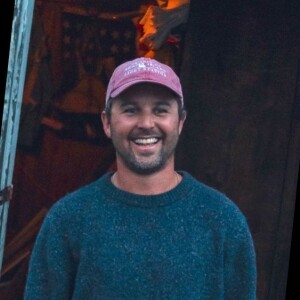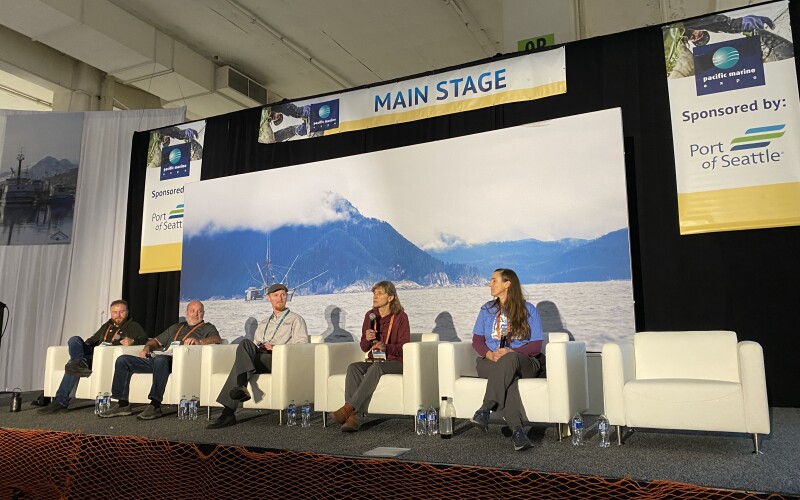Seattle, Washington, a long-standing host of the Pacific Marine Expo, has welcomed the commercial fishing industry for over five decades under one roof. This year, the event took place at Lumen Field, offering a platform for discussions on emerging technologies and equipment on the show floor, alongside informative presentations on industry trends.
In an opening session titled “Commercial Fishing Goes Electric,” Noah Oppenheim, principal and founder of Homarus Strategies, posed a question to the panelists. “Why are we having this conversation, given that diesel has worked so well for this industry for decades?”
The panel was comprised of Sam Waterhouse, of Elliott Bay Design Group, Tom Testaverde, Gloucester captain of F/V Midnight Sun, Linda Behnken, fisher and Executive Director at Alaska Longline Fishermen’s Association, and Sarah Schumann, fisher and coordinator at Fishery Friendly Climate Action.
Linda Behnken articulated the rationale behind exploring alternative fuel sources, stating, “I think there’s a couple reasons, the first is that the cost of fuel is probably the biggest cost that fishermen are facing every year, and that fuel comes from outside of our communities. She continued, “In Alaska, we are seeing such huge impacts on our fisheries from climate change, we know that emissions are the biggest factor in that. We are seeing major fish stocks crash, and we expect there to be less predictability in the future.”
Sam Waterhouse, providing a shipbuilding perspective, emphasized the importance of helping operators comprehend the range of options available to them for adopting alternative fuel technologies. He listed sought-after characteristics of fishing areas, “We look at: are there areas where they can do electrification? What fuels are available that makes sense for their vessels, to figure out, what are we doing in the future?”
A unanimous sentiment among the panelists was the necessity for government support in adopting these innovative technologies; they come at a substantial cost. While hybrid boats may not be a universal solution, their viability depends on specific circumstances, including operating practices, fishing methods, diesel costs, and electricity expenses.
Behnken stressed the importance of collaboration with the shipping and transportation industry, particularly in exploring next-generation fuels such as hydrogen and ammonia. “We’re still very interested in moving to the next-generation fuel. Our community is looking at both hydrogen and ammonia as a potential fuel for the future.” She emphasized the need for an inclusive and distributed approach that serves small ports along the coasts, not solely major terminals.
“From our perspective, what’s going on with the climate, (ocean) acidification is affecting our fisheries. We expect to see rising costs of fuel, and disruptions in the delivery systems, we want to make sure we’re building resilience into our communities and for our communities to be more and more self-reliant in our fisheries and making sure we can still fish,” Behnken said.
Sarah Schumann discussed the mission of the Fisheries Friendly Climate Campaign “To make sure that our industry is in the driver’s seat of its own energy transition, that means two things. That means, both building our own capacity as an industry to lead on these issues and convincing policymakers to support our leadership and to work with us to co-design a resilient and viable future for the fishing industry in a post-carbon world.”







